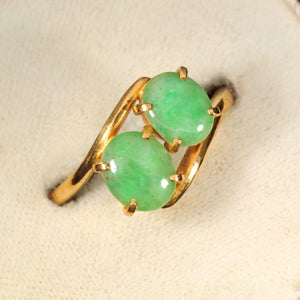Treated Gems: Different Gemstone Treatments and Why They Matter
Many of the gemstones you encounter—particularly in modern jewellery markets—undergo certain treatments to enhance their appearance. From heat-treated sapphires to fracture-filled emeralds, these techniques can influence a gem’s colour, clarity, longevity, and even its value. If you’re exploringantique and vintage rings or hoping to invest in a gemstone for a future heirloom, understanding the nuances of these treatments is essential. In this post, we’ll delve into the most common methods used to improve gems and why these practices matter for collectors and casual buyers alike.
1. Heat Treatment
Heat treatment is perhaps the most traditional and widely accepted enhancement:
- Purpose: To improve or intensify a gem’s natural colour (commonly used for corundum, such as rubies and sapphires).
- Process: Gems are heated at high temperatures under controlled conditions, sometimes for hours or days.
- Impact on Value: Heat treatments are generally deemed standard, especially for sapphires. However, unheated stones can command a premium, particularly in antique rings where originality is prized.
2. Fracture Filling
Fracture filling addresses cracks or fissures within a gemstone by injecting a substance (often resin or glass-like material) into these openings:
- Purpose: To improve clarity by making cracks less visible and stabilising the stone.
- Commonly Seen In: Rubies and emeralds. Emeralds are traditionally “oiled” with colourless or lightly tinted substances to mask fractures.
- Disclosure: Since fracture filling can significantly alter a gem’s look and durability, reputable sellers should fully disclose this treatment.
3. Diffusion
Diffusion involves adding elements to the surface of a gemstone—under high heat—so they penetrate shallow layers of the crystal structure:
- Purpose: To create or amplify certain colours (especially in sapphires). Titanium or beryllium diffusion is relatively well-known.
- Depth of Colour: The enhanced colour may be limited to the surface layer, making chips or re-polishing a concern if you’re looking to preserve the hue.
- Value Considerations: Diffusion-treated gems often sell for less than naturally coloured stones of similar appearance.
4. Irradiation
Irradiation is an enhancement that alters a gemstone’s colour by exposing it to radiation (commonly for topaz or certain diamonds):
- Purpose: To achieve or intensify specific colours, like the famously bright “London Blue” topaz.
- Post-Treatment Heating: Many irradiated stones are also heated afterwards to stabilise the new colour.
- Safety: Properly processed gems are safe to wear, but the treatment should be disclosed for transparency and resale clarity.
5. Bleaching and Dyeing
Bleaching and dyeing are common in porous stones like jade, pearls, or some varieties of chalcedony:
- Bleaching: Used to lighten or remove undesirable colours from a gem’s surface.
- Dyeing: Adds vibrant hues or evens out existing colour, frequently seen in jade or turquoise.
- Care Considerations: Dyed gems may be more susceptible to fading over time; mild cleaning methods are generally recommended.
6. Why Treatments Matter for Antique and Vintage Rings
In older jewellery, gemstone treatments can vary widely. Some stones in antique and vintage rings may have been heated centuries ago—an accepted practice even then—while others might show minimal or no enhancements. Key insights include:
- Value and Authenticity: Untreated gems may fetch higher prices or intrigue collectors with their original condition. It’s essential to know if your antique ring’s stone has undergone older or unusual techniques.
- Maintenance: Depending on the treatment, certain cleaning methods or repairs might not be suitable, ensuring you protect both the stone and ring setting.
- Investment Potential: A vintage piece with documented, minimal treatment could be rarer and more appealing in the collector’s market.
From simple heat treatments to intricate fracture filling, enhancements have long played a role in showcasing gems’ natural beauty. Understanding these methods is vital whether you’re eyeing modern jewellery or considering a precious stone in an antique or vintage ring. By arming yourself with knowledge, you can confidently appreciate how treatments influence a gem’s quality, care requirements, and overall value—ensuring each piece you add to your collection remains as captivating as the day it was first crafted.


